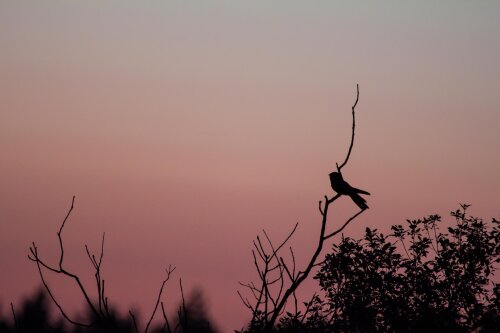Light pollution puts birds on the wrong track
Biologists first to prove the effect of skyglow on wildlife behaviour
Undoubtedly, you have at one time or another seen how the night sky sometimes turns orange. That phenomenon is called skyglow. It may look striking, but the impact of this type of light pollution is not without consequences. Biologists at the University of Antwerp in Belgium were able to demonstrate for the first time how skyglow alters the biological clock of wild animals.
It all started with the inexplicable behaviour of some birds. Researchers at the University of Antwerp have been monitoring the movements of several European nightjars for some time. Under natural conditions, this bird species can only be active during dawn and dusk and during the night when there is sufficient moonlight. The birds use twilight or moonlight to, among other things, hunt for food, but also to defend their territory or to look for a mate.
Eureka moment
‘During their breeding season, you can find them all over Eurasia, from Belgium to Mongolia, but the European nightjar winters in Africa’, Dr Ruben Evens says, a researcher at the Department of Biology (UAntwerp). ‘Using activity data, we could see how the birds in Africa adjusted their night rhythms to the lunar cycle. In contrast, we noticed that some nightjars in Belgium exhibited highly unusual behaviour. Even during moments of the night without moonlight, they appeared to be flying around instead of resting.’

The researchers were left with a conundrum. The eureka moment occurred to Dr Evens during his fieldwork in a Belgian nature reserve. Evens: ‘In our dataset, we had noticed another anomaly. For instance, hardly any activity was observed in some nightjars in Mongolia during a full moon night. Afterwards, it turned out that the overcast weather had obscured the moonlight, limiting the nightjar’s visibility. When I saw in my own country how during a thunderstorm the clouds turned not dark but yellow and orange, I had a hunch.’
World first
That coloured glow of the cloud cover was caused by skyglow: indirect light pollution created when artificial light from urbanised areas or industry is scattered by molecules, aerosols, and water particles in the air. The result is one big luminous blanket hanging in the atmosphere. The phenomenon can be seen from kilometres away, even far beyond the areas of the original light source.
‘In peri-urban areas, skyglow creates an alternative, artificial illumination of the sky that allows the nightjar to be active during formerly dark parts of the night', Dr Evens explains. ‘In the past decade, a lot of research has been done on the effect of artificial light on animals. However, those studies often focused on direct light pollution – such as streetlights – or were performed in experimental setups where skyglow was simulated. With these findings, we are among the first to prove that animals in the wild adapt their behaviour to skyglow.’
Ecological trap
Now that scientists at the University of Antwerp have been able to demonstrate the effect of skyglow on wildlife, questions arise about further implications of the phenomenon. For instance, researchers are curious whether it will increase the European nightjar population in our country. ‘Because of light pollution, the birds get up to twice as much time during the night to gather food for their young than nightjars in, for example, Mongolia’, Dr Evens explains. ‘In the short term, this can have a positive effect. However, worldwide, we are struggling with a decline in the number of insects. Sky glow allows nightjars in our region to search longer for food that is becoming increasingly scarce.’
But researchers also remain vigilant. ‘A possible danger is that sky glow becomes an ecological trap. Birds might become active when their food does not, or they might choose to settle in places with poor quality of life, such as the outskirts of cities and industry, solely for the benefits skyglow might provide. Thus, they run the risk of abandoning better habitats.’